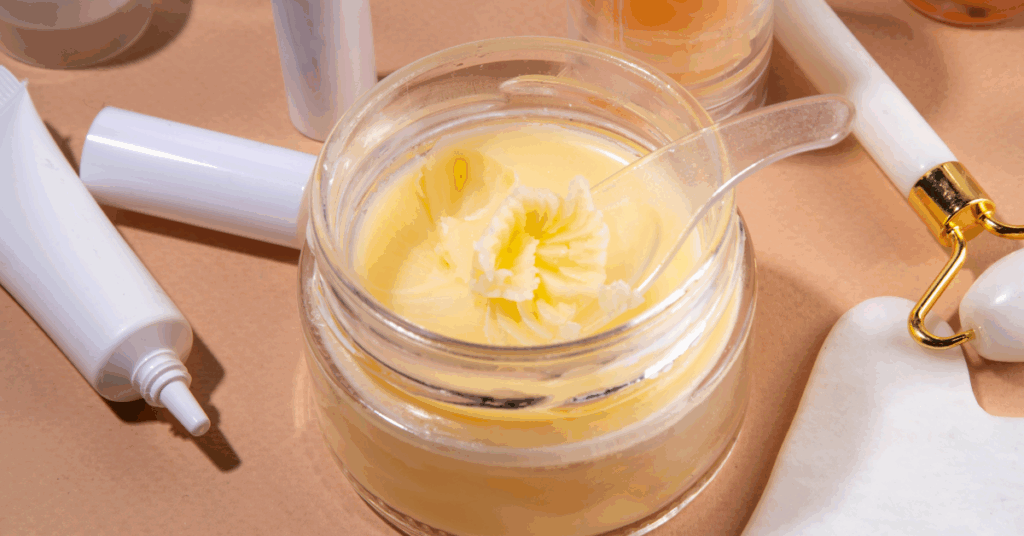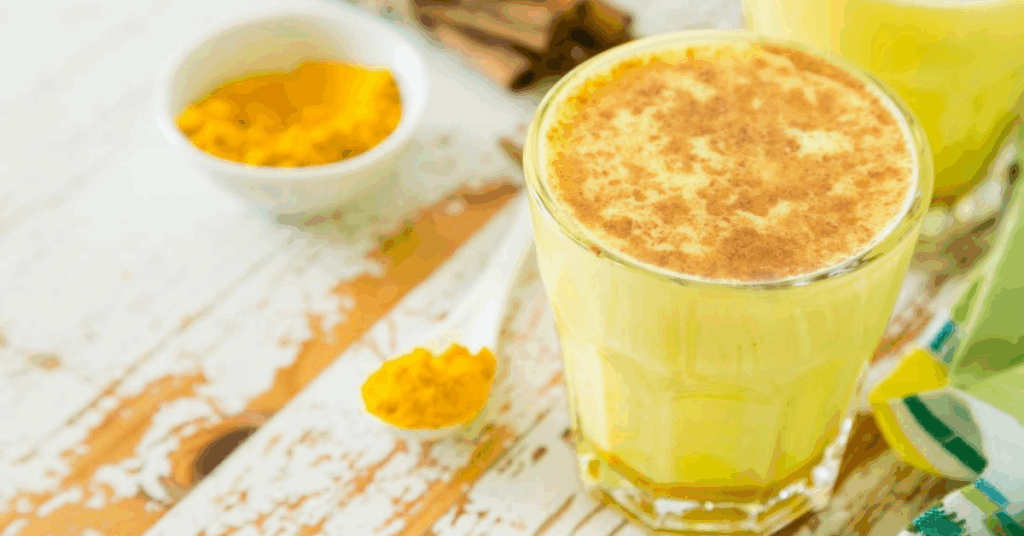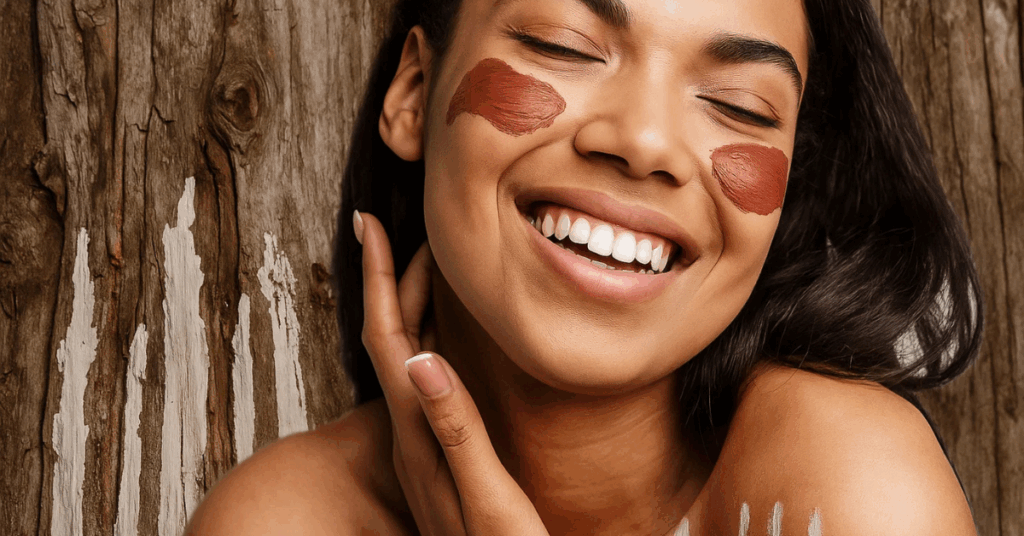There is zero denying that we are living in an era of next-level beauty innovation. From progressive cosmetic procedures and advanced non-surgical treatments to potent, ingredient-rich creams and serums, everything is at our fingertips. Whether it is the revolutionary rituals of K-beauty or unlocking the secrets of the gut-skin connection, we have never been more empowered, more informed, or more spoilt for choice.
But an unexpected trend is shaking up the skincare world: a return to our roots, quite literally. Ancestral, nature-powered skincare is surging in popularity as beauty lovers around the globe rediscover ancient rituals once whispered through generations, hidden in family traditions and regional folklore.
These time-honored methods are making a powerful comeback. A 2024 report by Grand View Research projects the global organic and natural skincare market will soar to $25.1 billion (give or take £20.33 billion) by 2027. Driving this surge is a renewed fascination with ancestral skincare, formulas rooted in cultural heritage and crafted from minimally processed, nature-based ingredients. Social media has supercharged the trend, with TikTok and Instagram propelling hashtags like #AncientSkincare, and #TallowGlow, into viral territory, amassing millions of views and sparking a global movement.
But what is the deeper story here? And the million-dollar question, is it just a fad, or is there real power in the past?
Ancient Wisdom Meets Modern Glow
Ancestral skincare refers to the practice of using traditional beauty rituals and ingredients passed down through generations. These methods often rely on natural remedies like herbs, oils, and clays, and are rooted in holistic philosophies that emphasise overall well-being and balance. Essentially, it is about connecting with time-tested skin care practices from the past.
Therefore, it goes without saying that these rituals and their ingredient lists are celebrated for their simplicity, sustainability, and proven effectiveness. Today, however, you can put a modern spin on it (if you wish), for example, by adding new methods such as serums that work well with microneedling to help the ingredients absorb better and work more effectively.
But before we get ahead of ourselves, let us first take a look at some of the most popular ancestral skincare routines that have gone from grandma’s kitchen to viral fame.
Tallow Balm
Beef tallow, once a staple in 19th-century European and early American skincare, is packed with fat-soluble vitamins A, D, E, and K. It also perfectly mirrors your skin’s natural oils, making it a fabulous ingredient for restoring the skin barrier and deeply hydrating dry or sensitive skin. And brands like Primally Pure and Toups & Co. are riding this wave, promoting tallow balms as “ancestral moisturisers” that provide rich, all-natural nourishment without the synthetic stuff added to the mix (literally). Why people love it, well, it is inexpensive, easy to make, and toxin-free.

Here is a DIY Tallow Balm Recipe Using Only 3 Ingredients:
- Gently cook finely chopped raw beef fat (suet).
- Place it in a crockpot and cook on low heat.
- Let it gently cook until the fat melts into a liquid.
- Strain the liquid to remove any bits or impurities.
- Boom, you have tallow!
But does it work? Various dermatologists seem to think so! According to Mona Dermatology, it can be used as an overnight treatment, especially for dry or irritated areas. There you have it. However, because tallow is extremely thick, it can clog your pores (not to mention the meaty scent).
Ghee For Glow
Used in Ayurvedic rituals for over 2,000 years, ghee (clarified butter) is known for its anti-inflammatory and deeply hydrating properties. Ghee is also a core ingredient in many Ayurvedic skin formulations, especially in traditional remedies for dryness, inflammation, and dullness. Plus, ghee-based facials are particularly popular in India and Sri Lanka, where warm ghee is massaged into the skin to boost circulation and impart a natural glow. Its high concentration of butyric acid also makes it beneficial for conditions like eczema and psoriasis.
How To Make Your Very Own Ghee-Based Moisturiser:
- Melt ghee in a small pot or double boiler.
- Add other ingredients like coconut oil, almond oil, and essential oils (optional).
- Mix everything well until fully combined.
- Pour the mixture into a container.
- Let it cool and solidify.
- Et voila!
Research shows that ghee can help wounds heal faster, strengthen skin, and increase collagen, which is important for youthful skin. Probably because it is rich in vitamins A, E, D, and other skin-boosting goodies mentioned above.
Cow Milk And Turmeric Washes
Also referred to as Golden Milk, you can drink this delicious blend of cow milk and turmeric, or wash your face with it. The choice is yours. Rooted in South Asian traditions, particularly in India. Cow milk contains lactic acid, a natural exfoliant that removes dead skin cells and softens the skin, while turmeric offers powerful antioxidant and antimicrobial properties, brightening the complexion and reducing inflammation. This duo is now being revived as a DIY face wash or mask, often paired with honey or sandalwood for added benefits. If you are feeling adventurous.

How To Whip Up A Cow Milk And Turmeric Face Wash:
- Have a pinch of turmeric ready.
- Add it to raw milk and mix.
- It is truly that simple!
Feeling Fancy? Here Is How To Make A Cow Milk And Turmeric Mask:
- Take 1 to 2 tablespoons of turmeric powder.
- Add enough cow’s milk to form a smooth paste.
- Mix well until the consistency is even and smooth.
- Apply the paste to your face evenly.
- Leave it on for 10 to 15 minutes.
- Rinse off with warm water.
But before you go and apply seven layers of this mask to your face, it’s important to note that turmeric can temporarily stain the skin yellow. To avoid this, make sure you rinse thoroughly after use. Now, let us look at the stats: studies show that curcumin, the active compound in turmeric, can reduce skin inflammation by up to 50%, helping to combat acne and redness. And that is just one benefit.
Natural Exfoliants
Before chemical exfoliants like AHAs and BHAs took over the skincare aisle, people relied on grains, salts, and botanicals for physical exfoliation. In Japan, crushed rice bran was used in geisha routines for brightening the skin. In India, a mix of ground lentils, chickpea flour (besan), and turmeric was applied during “ubtan” rituals to exfoliate and prepare brides for wedding ceremonies. Similarly, Middle Eastern traditions used olive oil mixed with salt or sugar in hammams to buff the skin and stimulate circulation.
Other Ancient Exfoliants Making A Comeback Include:
- Dried flower petals: Rose, calendula, and hibiscus petals, ground into powders, add a fragrant and soothing element to scrubs. So, why not adorn yourself with flowers? My thoughts exactly.
- Oats: Used in Celtic and Nordic traditions, oats soothe irritated skin and gently exfoliate.
- Charcoal: Indigenous African and Asian cultures used activated charcoal for its detoxifying properties
Clay Masks
From Moroccan Rhassoul to French Green Clay and Indian Multani Mitti (Fuller’s Earth), clay masks have been used for centuries to draw out impurities, unclog pores, and balance oil production. Ancient Egyptians are believed to have used clay from the Nile River for beauty purposes, while Indigenous Australian communities have used white clay for ceremonial and healing treatments for millennia. And the recipes for traditional clay masks are plenty!
From Old Traditions To New Radiance
Look, skincare today can feel way too complicated, but ancestral methods bring us back to simple, powerful, and natural healing. The ones mentioned in today’s article only scratch the surface! With a globe full of cultures and ancient traditions, diving headfirst into traditional beauty rituals to find the one suited to your needs is truly exciting!
Just remember, while ancestral skincare offers a wealth of benefits, it is important to understand that not all natural ingredients are suitable for every skin type. Patch tests and proper research are essential before adopting any new routine. And even better, consulting with a skincare specialist first!


